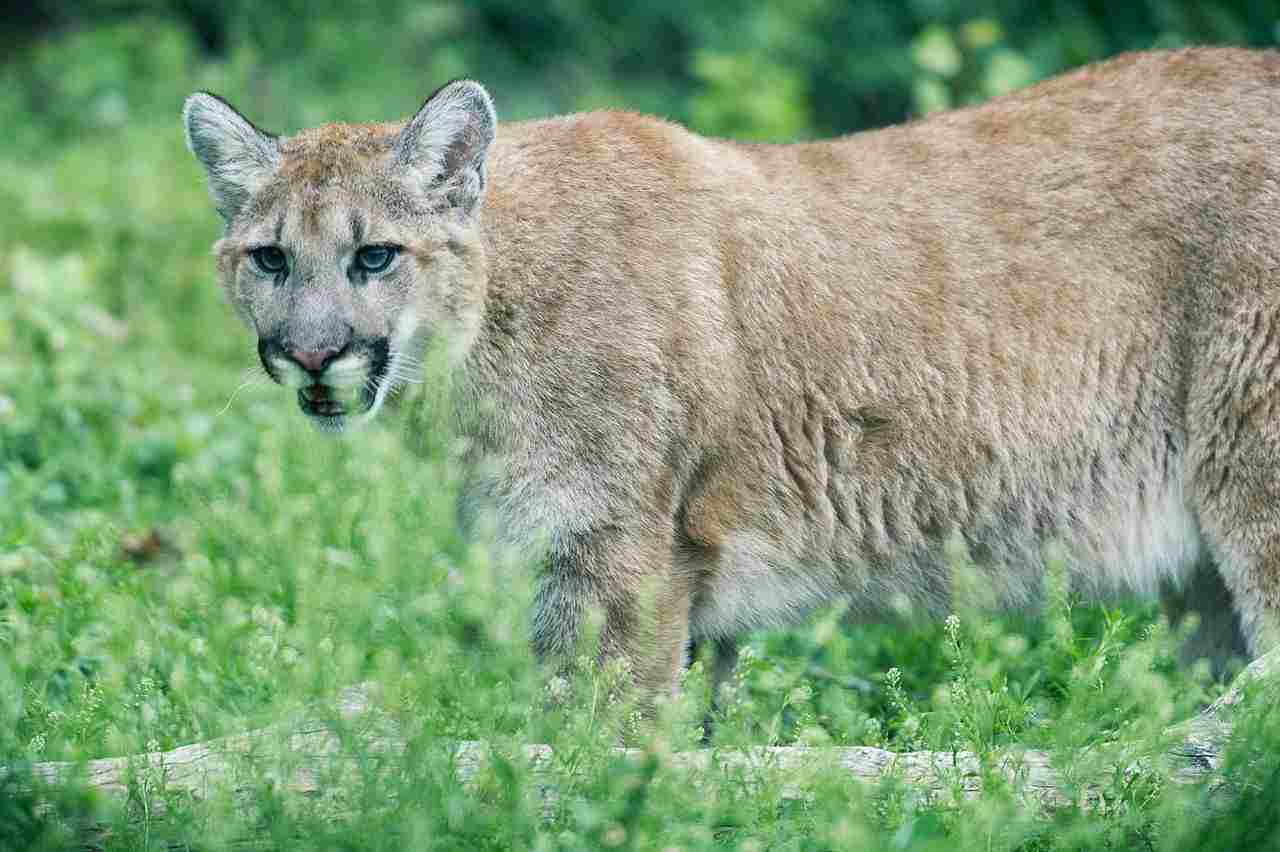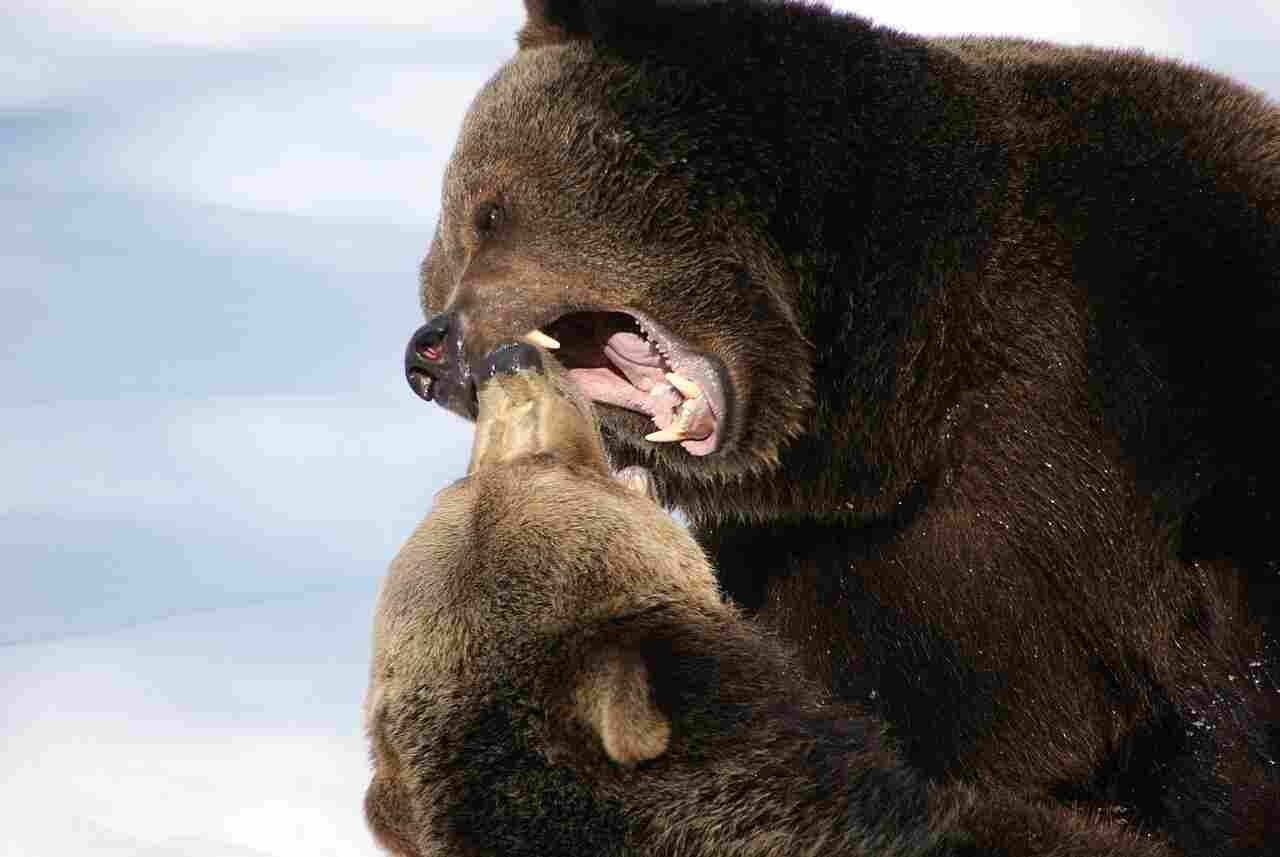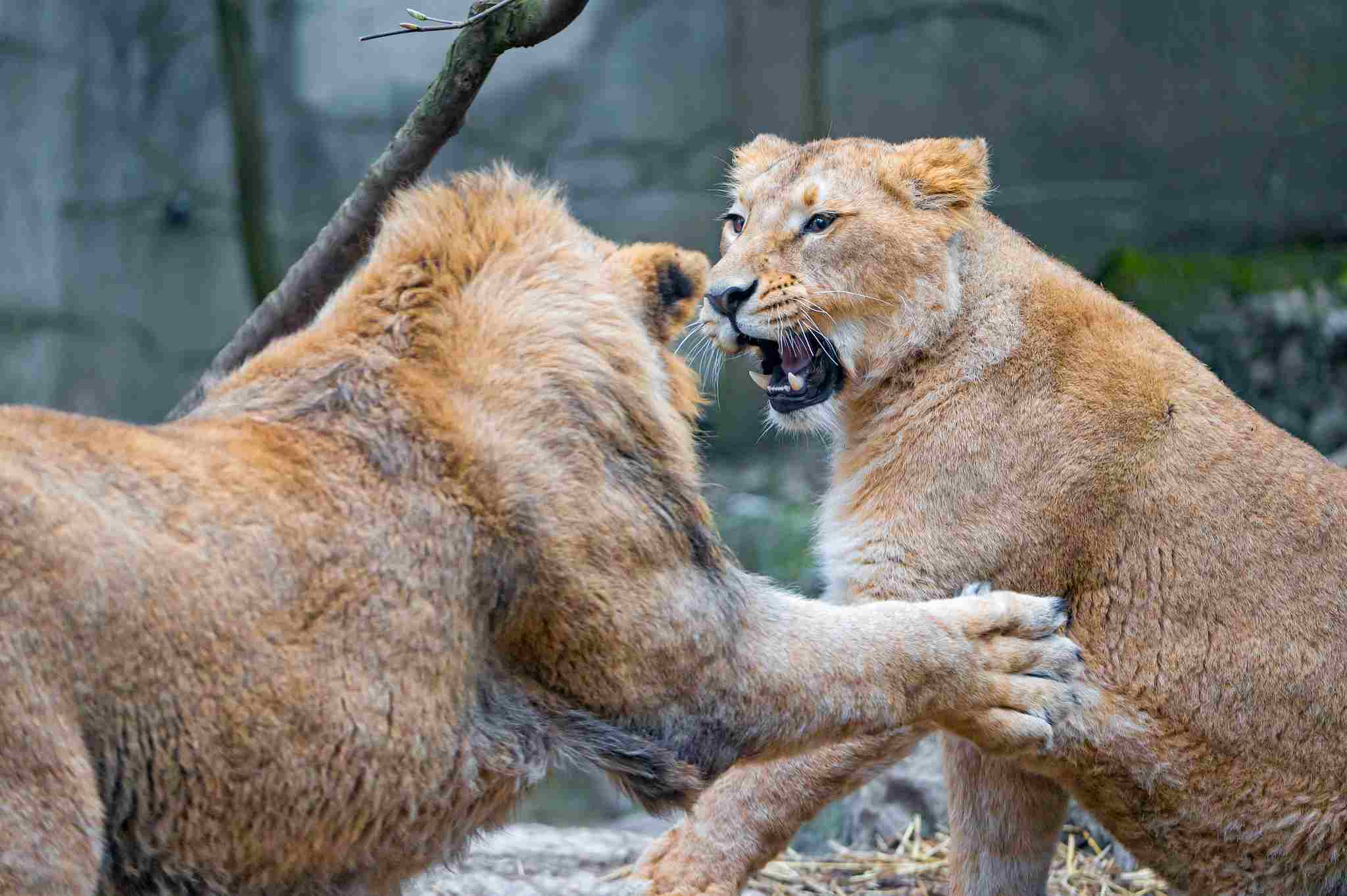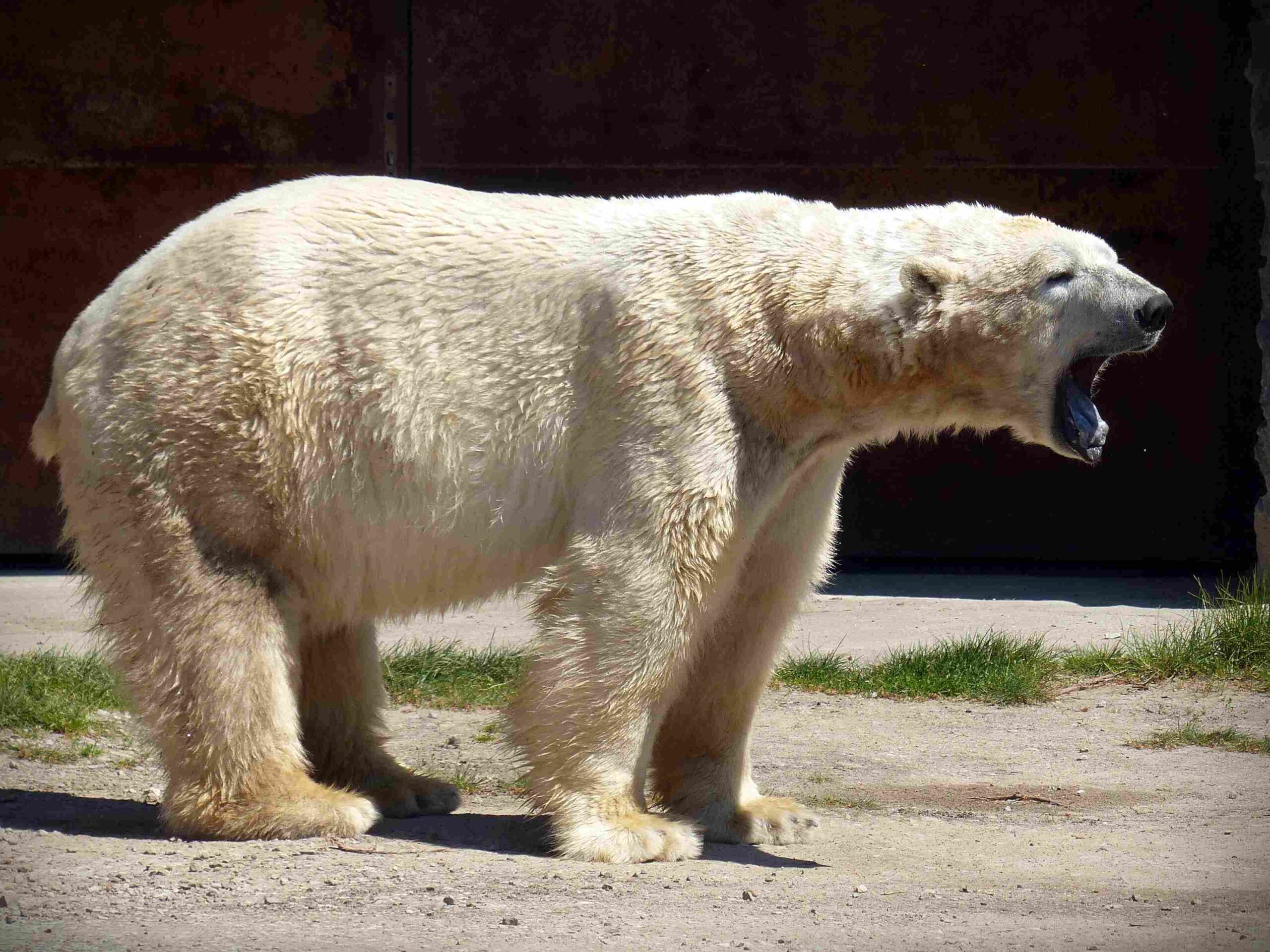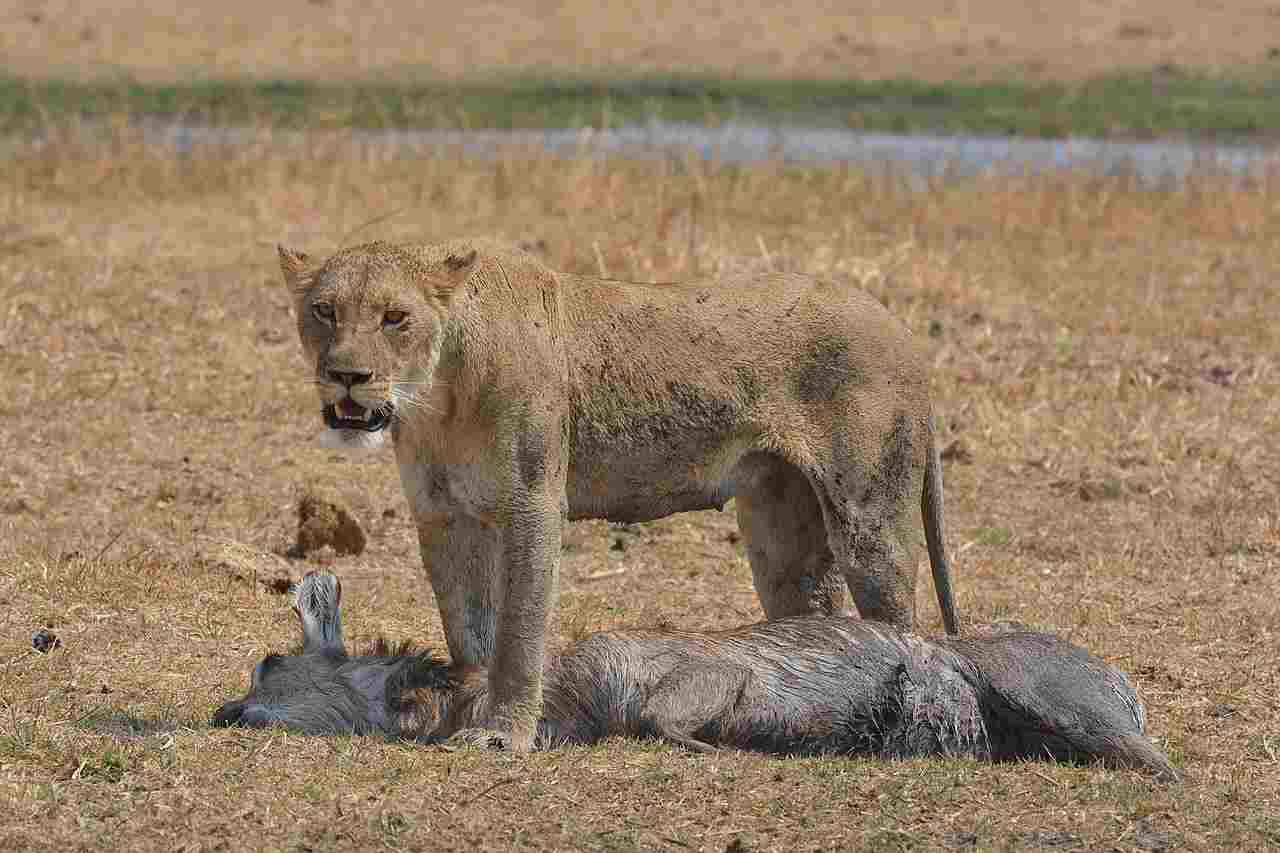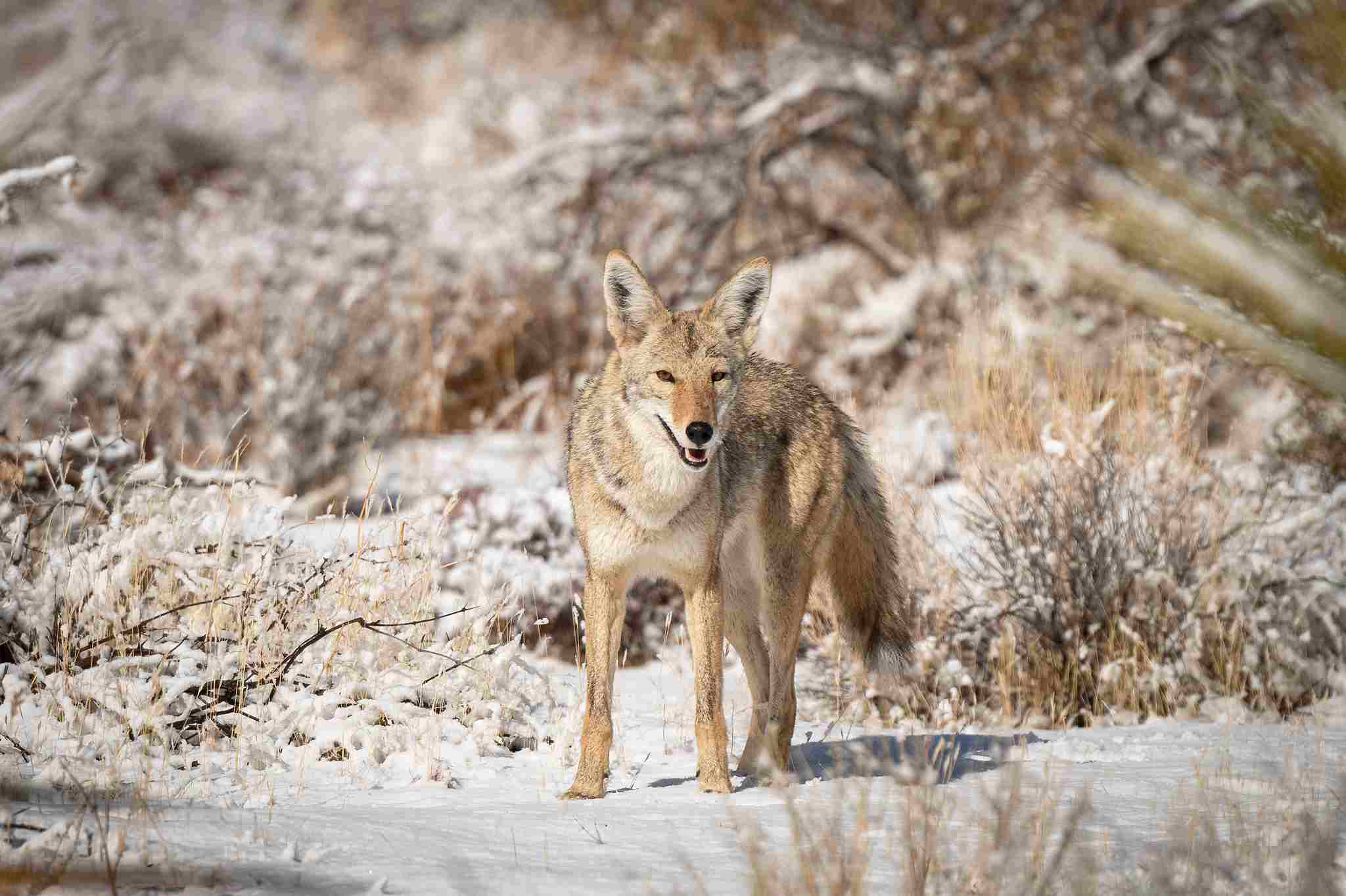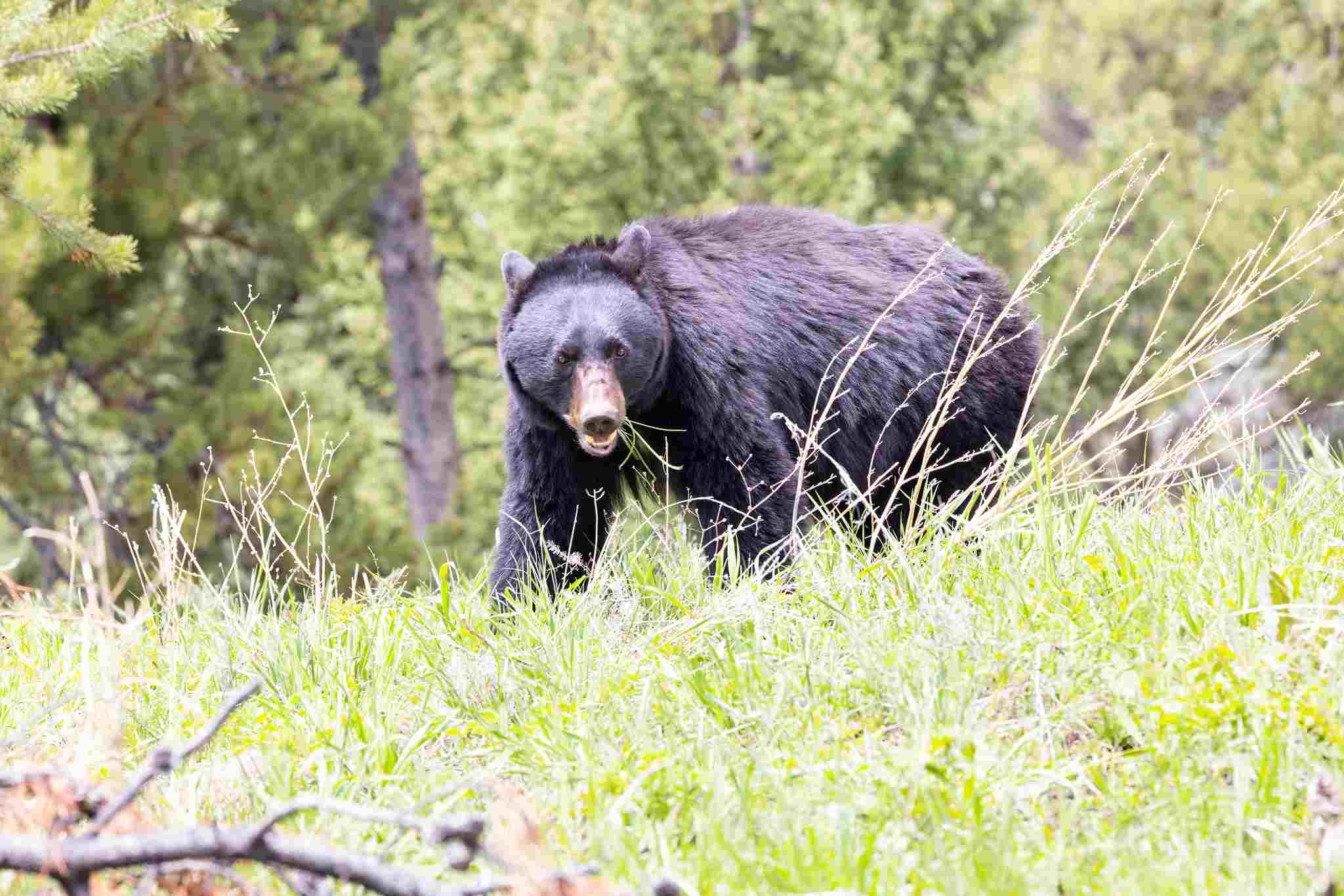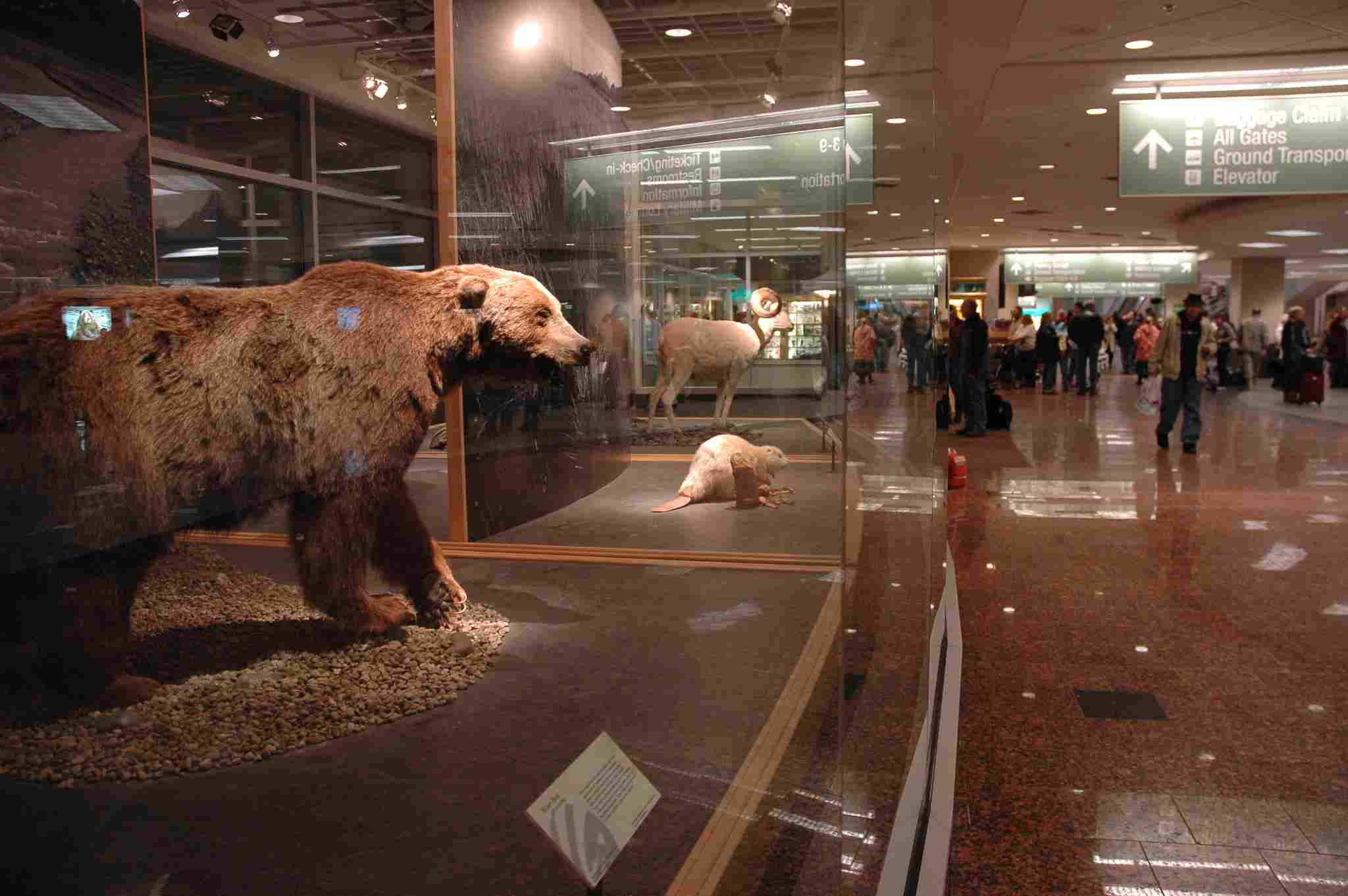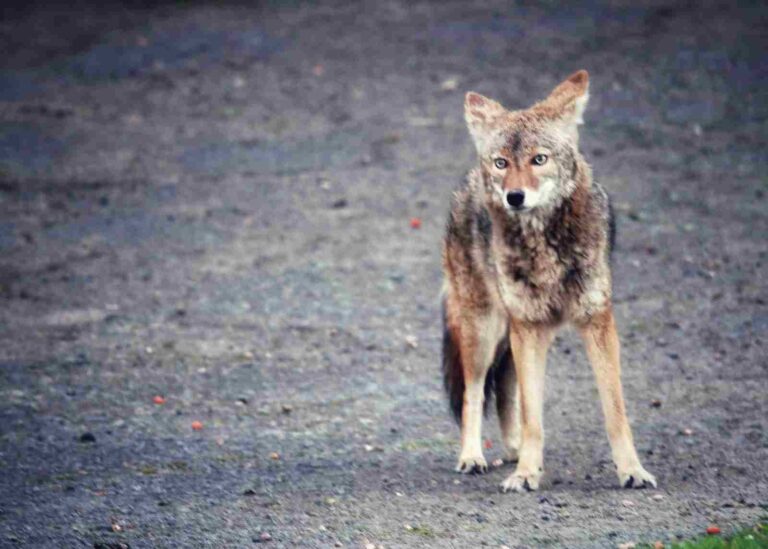Mountain Lion Vs Bear Size, Weight, Ecological Comparison
A bear will win a mountain lion in a fight because it is significantly larger, heavier, stronger, and generally more aggressive, as well as having a stronger bite force. In terms of size and weight, bears have a clear advantage over mountain lions.
Additionally, bears are known for their formidable strength, which gives them an upper hand in physical confrontations. These factors, along with others like aggression and bite force, are used to compare bears and mountain lions in this article.
Reasons Why a Bear Will Win a Mountain Lion In a Fight/Physical Confrontation
I). Size and Weight Advantages
One of the main reasons why a bear would win in a fight against a mountain lion is its size and weight advantage. Bears are significantly larger and heavier than mountain lions, giving them a physical advantage in a confrontation.
The average adult male bear can weigh anywhere between 300 to 1,500 pounds, while a mountain lion typically weighs between 80 to 200 pounds. This stark difference in size and weight allows bears to overpower mountain lions with their sheer strength and size.
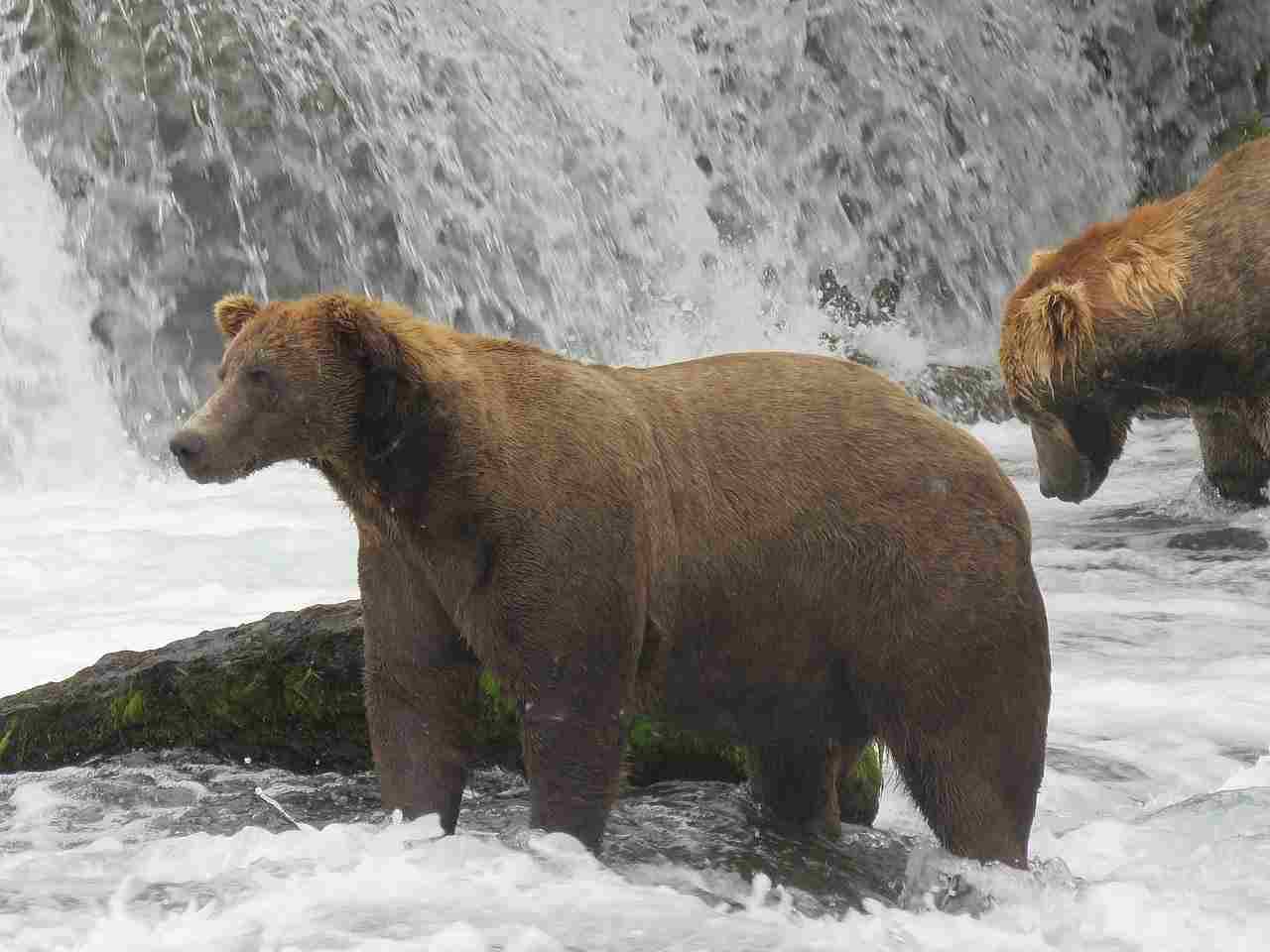
II). Bears are Significantly Stronger Than Mountain Lions
In addition to their size advantage, bears are also significantly stronger than mountain lions. Bears have evolved to have powerful muscles and strong bone structures, enabling them to exert immense force.
This strength gives bears the upper hand in a physical confrontation, as they can easily overpower a mountain lion with their sheer strength alone.
III). Higher Level of Aggressiveness
Bears are known for their higher level of aggressiveness compared to mountain lions. While both animals can be territorial and defend themselves when necessary, bears are generally more aggressive and assertive. This aggression can give bears an advantage in a fight, as they are more likely to initiate and dominate the confrontation.
IV). Formidable Bite Force
Another reason why a bear would win in a fight against a mountain lion is its formidable bite force. Bears have a stronger bite force compared to mountain lions, which allows them to inflict more damage during a physical confrontation. With their powerful jaws and sharp teeth, bears can deliver devastating bites that can incapacitate a mountain lion.
*Details of Comparison
| Aspect | Bear | Mountain Lion |
| Size and Weight | Larger and heavier |
Smaller and lighter
|
| Strength | Significantly stronger | Agile and quick |
| Aggressiveness | Generally more aggressive |
Territorial and defensive
|
| Bite Force | Stronger bite force |
Impressive bite force
|
| Taxonomy | Ursidae family and Ursus genus |
Felidae family and Puma genus
|
| Appearance | Shaggy fur, robust build |
Sleek fur, agile build
|
| Size | Larger | Smaller |
| Weight | Heavier | Lighter |
| Speed and Agility | Slower and less agile |
Faster and more agile
|
| Overall Physical Capacity | Stronger overall | Agile and quick |
| Habitat | Highly adaptable |
Limited geographic range
|
| Lifespan | Longer | Shorter |
| Behavior | Omnivorous, more social |
Carnivorous, solitary
|
| Reproduction | Viviparous, fewer offspring |
Viviparous, more offspring
|
| Danger Posed to Humans | More dangerous due to size and strength |
Lesser risk due to smaller size
|
| Intelligence | Problem-solving, adaptable |
Hunter’s cunning, sensory perception
|
| Tracks | Larger, with claw marks |
Smaller, without prominent claw marks
|
| Conservation Status | Endangered or threatened in some cases |
Faces conservation concerns
|
1). Taxonomy
The mountain lion, scientifically known as Puma concolor, belongs to the Felidae family and the Puma genus. On the other hand, bears belong to the Ursidae family and are classified under the Ursus genus.
While both animals are mammals, their taxonomic classification places them in different families and genera. This distinction highlights their evolutionary divergence and unique characteristics.
The comparison of the animals’ taxonomy provides a foundation for understanding their distinct traits and behaviors. By examining their genetic relationships, scientists can gain insights into their physical attributes, habitat preferences, and ecological roles.
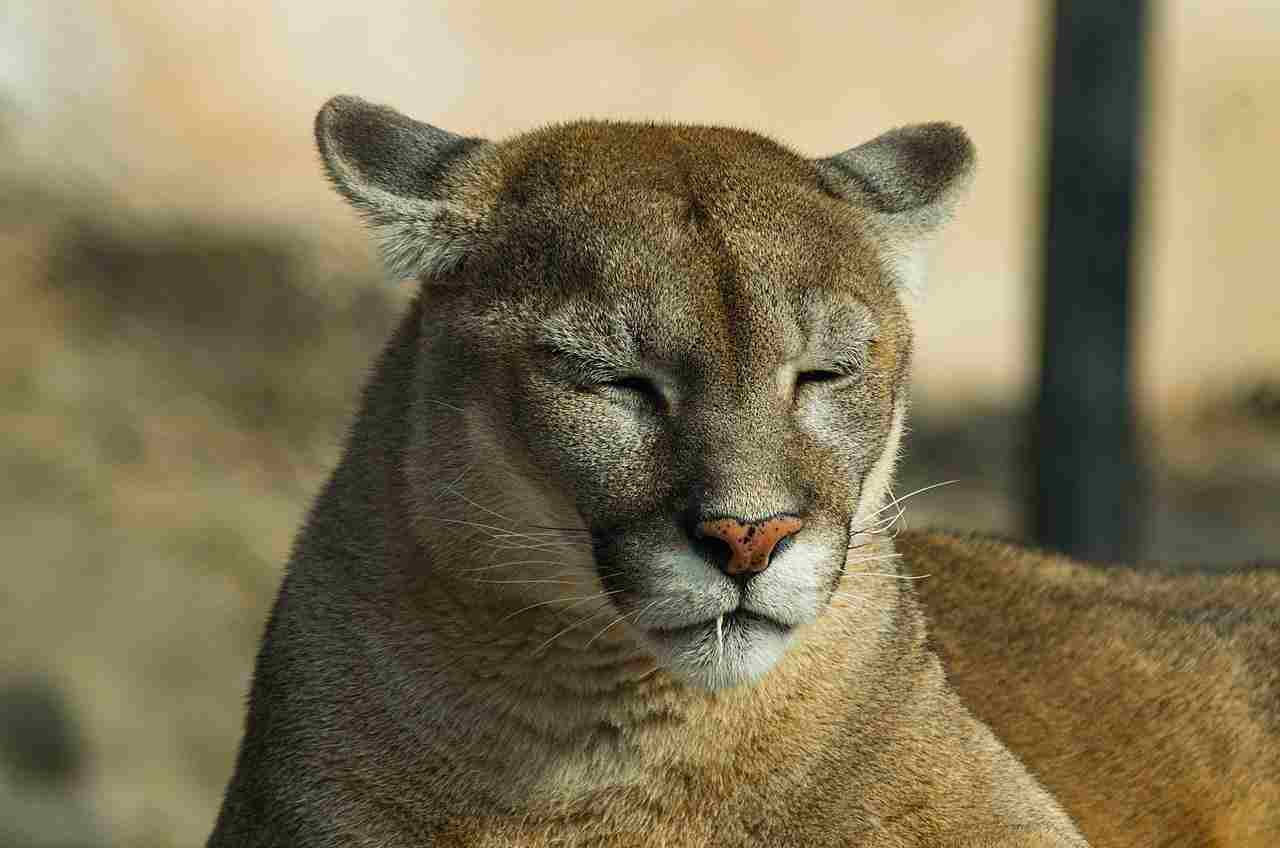
2). Appearance
The appearance of both mountain lions and bears is distinct and plays a crucial role in their survival and ecological roles.
Starting with their coats, mountain lions have a short and sleek fur that is typically tan or brown in color. This coloration helps them blend into their surroundings, providing effective camouflage during hunting or stalking prey. Bears, on the other hand, have a shaggy and thick fur that can vary in color, including black, brown, or even white. This fur provides insulation and protection from the elements, but it does not offer the same level of camouflage as the mountain lion’s coat.
In terms of stature and build, mountain lions have a slender and agile body, with a long tail that aids in balance and maneuverability. They have well-developed muscles, particularly in their hind legs, which allow them to leap and pounce on their prey with precision. Bears, on the other hand, have a more robust and stocky build, with a hunched back and powerful limbs. Their physical strength and size make them formidable predators and enable them to dig, climb, and even break into food sources such as beehives or garbage cans.
Generally, while both mountain lions and bears have unique appearances that suit their respective lifestyles, the mountain lion’s sleek coat and agile build provide it with superior camouflage and agility, while the bear’s shaggy fur and powerful stature make it a formidable force in the wild.
3). Size
When comparing the size of mountain lions and bears, it is important to consider their total body length and height at the shoulders. Mountain lions typically measure between 5 to 9 feet in length from head to tail, with males being larger than females. They stand at a height of around 2 to 2.5 feet at the shoulders. On the other hand, bears can vary significantly in size depending on the species. Grizzly bears, for example, can reach lengths of up to 8 feet and stand at a height of 3 to 4 feet at the shoulders.
In terms of weight, mountain lions generally weigh between 80 to 200 pounds, with males being heavier than females. Bears, on the other hand, can be much larger and heavier. Grizzly bears, for instance, can weigh anywhere from 300 to 1,500 pounds, with males being significantly larger than females.
Overall, bears are larger and heavier than mountain lions, with grizzly bears being particularly massive. This size advantage gives bears a significant advantage in physical confrontations and allows them to overpower mountain lions in a fight.
4). Weight
When comparing the weight of mountain lions and bears, it becomes evident that bears are significantly heavier. Mountain lions generally weigh between 80 to 200 pounds, with males being heavier than females. On the other hand, bears can vary greatly in weight depending on the species. Grizzly bears, for example, can weigh anywhere from 300 to 1,500 pounds, with males being considerably larger than females.
The weight advantage of bears over mountain lions is substantial and plays a crucial role in determining the outcome of a physical confrontation between the two. The sheer size and mass of bears give them a significant advantage in terms of strength and power. With their immense weight, bears possess the ability to overpower mountain lions and exert dominance in a fight.
Furthermore, the weight of bears also contributes to their ability to withstand attacks and defend themselves effectively. The sheer force generated by their heavy bodies can be intimidating and serve as a deterrent to potential threats, including mountain lions.
Therefore, bears outweigh mountain lions by a considerable margin. Their weight advantage not only gives them a physical advantage but also contributes to their overall dominance in the animal kingdom.
5). Speed and Agility
When comparing the speed and agility of mountain lions and bears, it is clear that mountain lions have the advantage. Mountain lions are known for their incredible speed and agility, allowing them to navigate through rugged terrains and chase down their prey with precision. They can reach speeds of up to 50 miles per hour in short bursts, making them one of the fastest land animals.
On the other hand, bears are not known for their speed and agility. While they can run at a decent pace, they are no match for the swiftness of mountain lions. Bears are built for strength and endurance rather than speed, and their large bodies can limit their agility. They are better suited for slower movements and rely on their size and power to catch their prey.
The speed and agility of mountain lions give them a significant advantage in a physical confrontation with bears. They can quickly outmaneuver bears and avoid their attacks, making it difficult for bears to land a successful strike. Mountain lions can use their speed to their advantage, evading the powerful swipes of bears and launching counterattacks when the opportunity arises.
Therefore, when it comes to speed and agility, mountain lions surpass bears. Their exceptional speed allows them to outmaneuver bears and avoid potential threats, giving them an edge in a physical confrontation.
6). Bite Force
Mountain lions have an impressive bite force, with an average psi ranging from 350 to 700. This allows them to deliver a powerful bite that can easily crush the bones and neck of their prey. Their sharp teeth and strong jaw muscles enable them to quickly immobilize their target, ensuring a successful kill.
On the other hand, bears possess an even more formidable bite force. With an average psi ranging from 600 to 1200, bears have one of the strongest bites among land animals. Their long canines and robust jaw muscles enable them to exert immense pressure, capable of breaking through tough hides and bones.
The difference in bite force between mountain lions and bears is significant. While mountain lions have a strong bite, bears possess a much more powerful bite that can cause severe damage. This gives bears an advantage when it comes to hunting and subduing larger prey.
Therefore, when comparing the bite force of mountain lions and bears, bears have a clear advantage. Their stronger bite allows them to overpower and incapacitate their prey more effectively.
7). Overall Physical Capacity (Which is Stronger?)
When comparing the overall physical capacity of bears and mountain lions, it becomes clear that the bear is far stronger than the mountain lion. Bears are larger and heavier, with more muscle mass and endurance. This gives them a significant advantage in terms of raw strength and power.
However, it’s important to note that while bears may have the advantage in terms of size and strength, mountain lions are incredibly agile. Their agility allows them to swiftly maneuver and evade attacks, making it difficult for a bear to catch them. In a violent confrontation between the two, the mountain lion’s agility could be a determining factor in causing the death of the bear.
In terms of a direct comparison of the animals, the bear’s size and strength give it a clear advantage in terms of overall physical capacity. Bears have the ability to overpower and subdue larger prey, thanks to their sheer strength and powerful physique. On the other hand, while mountain lions may not possess the same level of strength, their agility and quick reflexes make them formidable predators in their own right.
Therefore, when considering the overall physical capacity of bears and mountain lions, the bear emerges as the stronger of the two. However, the mountain lion’s agility and evasive abilities should not be underestimated.
8). Habitat
Bears are highly adaptable and can be found in a variety of habitats, including forests, mountains, tundra, and even coastal areas. They are known to inhabit North America, Europe, Asia, and parts of South America. Bears are opportunistic omnivores, meaning they can thrive in different environments and have a diverse diet that includes plants, berries, insects, fish, and small mammals.
On the other hand, mountain lions, also known as cougars or pumas, have a more limited geographic range. They are primarily found in the Americas, from Canada to Argentina. Mountain lions prefer habitats with dense vegetation, such as forests, deserts, and grasslands. They are solitary animals and require large territories to roam and hunt their prey, which mainly consists of deer and smaller mammals.
In terms of habitat, bears have a wider range and can adapt to various ecosystems, while mountain lions are more specialized in their habitat preferences. This difference in habitat adaptation reflects the varying ecological niches that these animals occupy.
Therefore, the habitat of bears and mountain lions influences their behavior, diet, and interactions with other species.
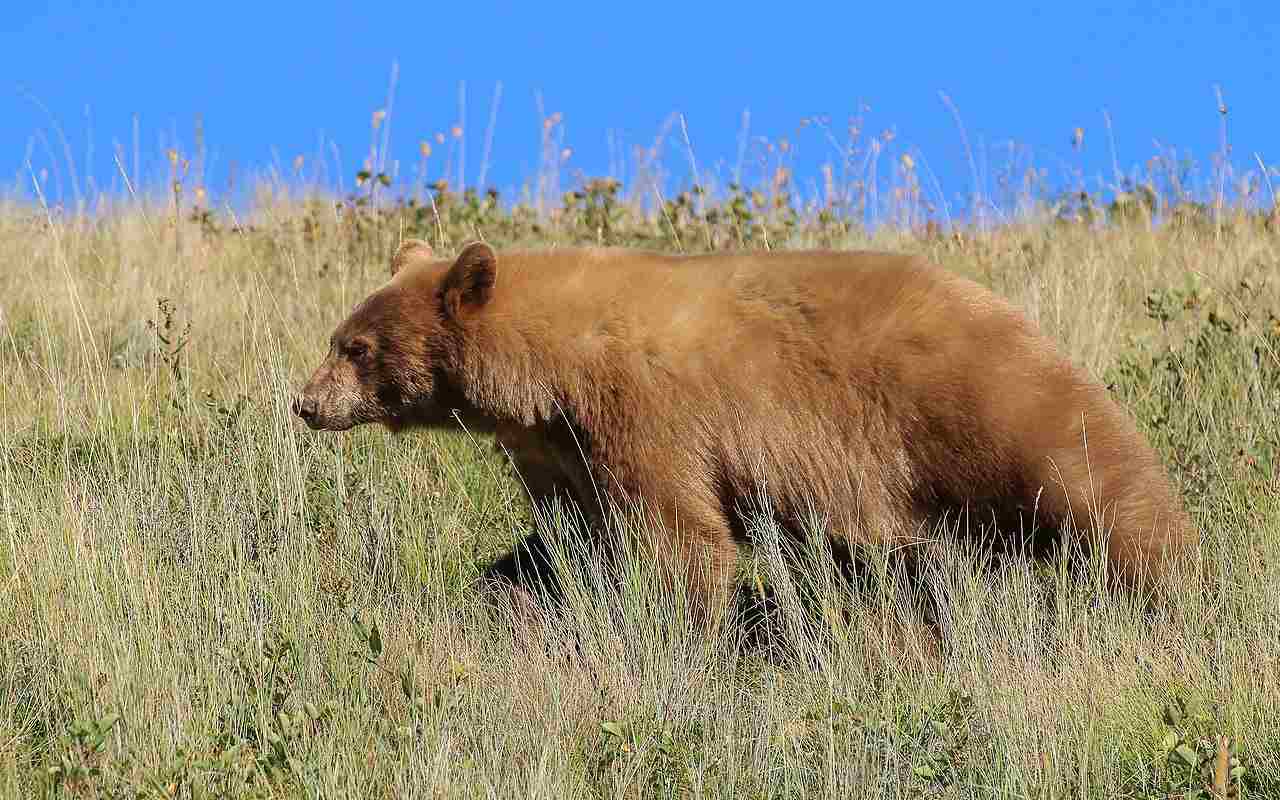
Mountain Lion Vs Bear: Though Not Always, the Habitats of Bears and Mountain Lions Can Overlap (Credit: Martin Kraft 2013 .CC BY-SA 4.0.)
9). Lifespan
Bears have a relatively long lifespan compared to mountain lions, with some species living up to 30 years in the wild. This extended lifespan can be attributed to their larger size, slower metabolism, and lower predation pressure.
On the other hand, mountain lions have a shorter lifespan, typically ranging from 8 to 13 years in the wild. This shorter lifespan can be attributed to several factors, including their smaller size, higher metabolic rate, and increased predation pressure. Mountain lions face threats from other predators, such as bears and wolves, as well as human activities, including hunting and habitat loss.
The difference in lifespan between bears and mountain lions also reflects their reproductive strategies. Bears have a slower reproductive rate, with females typically giving birth to one or two cubs every two to three years. This slower reproductive rate allows bears to invest more time and energy into raising their offspring, increasing their chances of survival.
In contrast, mountain lions have a faster reproductive rate, with females giving birth to a litter of one to six cubs every two to three years. This faster reproductive rate allows mountain lions to compensate for their shorter lifespan by producing more offspring.
10). Behavior
When comparing the behavior of bears and mountain lions, several key aspects come into play. One important factor is feeding behavior. Bears are omnivorous, meaning they have a varied diet that includes both plants and animals. They are known to forage for berries, nuts, and insects, as well as hunt for fish and small mammals. On the other hand, mountain lions are carnivorous and primarily feed on deer, elk, and other ungulates.
Aggression is another aspect of behavior that differs between the two species. While bears are generally more docile and tend to avoid confrontations, they can become aggressive if they feel threatened or if their cubs are in danger. Mountain lions, on the other hand, are solitary and territorial predators. They are known for their stealthy hunting techniques and can exhibit aggressive behavior when defending their territory or during mating season.
Vocalization is also an important aspect of behavior to consider. Bears are known for their vocalizations, including growls, roars, and huffs, which they use to communicate with other bears. Mountain lions, on the other hand, are relatively silent animals. They communicate through visual cues, scent marking, and occasional vocalizations such as hisses and screams.
In terms of social behavior, bears are more likely to exhibit social interactions, especially during mating season or when raising their cubs. They may form temporary social groups, particularly when food sources are abundant. Mountain lions, on the other hand, are solitary animals and prefer to live and hunt alone.
When it comes to parenting, bears are known for their maternal care. Female bears invest a significant amount of time and energy into raising their cubs, teaching them essential survival skills. Mountain lions also exhibit maternal care, but their parenting style is relatively less involved compared to bears.
11). Reproduction
When comparing the reproduction of bears and mountain lions, there are several key differences to consider. One important aspect is the mode of reproduction. Bears are viviparous, meaning they give birth to live young. Female bears have a gestation period of around 6 to 8 months before giving birth to cubs. On the other hand, mountain lions are also viviparous, giving birth to live young after a gestation period of approximately 90 to 96 days.
In terms of the number of offspring, bears typically give birth to 1 to 4 cubs, although larger litters of up to 6 cubs have been recorded. Mountain lions, on the other hand, usually have litters of 1 to 6 cubs, with 2 to 3 cubs being the most common.
Another aspect to consider is the level of parental care. Female bears invest a significant amount of time and energy into raising their cubs, providing them with protection, food, and teaching them essential survival skills. Mountain lions also exhibit maternal care, but their level of involvement is relatively less compared to bears. Once the cubs reach a certain age, the mother mountain lion will gradually separate from them, allowing them to become independent.
Therefore, both bears and mountain lions have viviparous reproduction, but there are differences in gestation periods, litter sizes, and parental care.
12). Danger Posed to Humans
While both animals can be potentially dangerous, bears have a higher rate of human deaths caused. This is primarily due to their larger size, greater strength, and more aggressive nature. Bears can weigh up to 1,500 pounds and stand over 10 feet tall, making them formidable predators.
If you encounter a bear in the wild, it is important to take precautions to ensure your safety. Firstly, it is crucial to remain calm and avoid sudden movements that may provoke the bear. Backing away slowly and maintaining eye contact can help to assert dominance without appearing threatening. It is also advisable to carry bear spray as a deterrent and to make loud noises to scare the bear away.
On the other hand, mountain lions, while still potentially dangerous, pose a lower risk to humans. They are smaller and lighter than bears, with an average weight of 100 to 200 pounds. Mountain lions are generally elusive and tend to avoid human encounters. However, if you do come across a mountain lion, it is important to stand your ground, make yourself appear larger, and slowly back away without turning your back on the animal.
Therefore, while both bears and mountain lions can pose a danger to humans, bears are generally considered to be more dangerous due to their larger size, greater strength, and higher rate of human deaths caused.
13). Intelligence
When comparing the intelligence of bears and mountain lions, it is important to note that both animals possess a level of intelligence that allows them to survive and thrive in their respective habitats. However, there are some notable differences in their cognitive abilities.
Bears are known for their problem-solving skills and adaptability. They have been observed using tools, such as rocks, to access food sources and have shown the ability to learn from experience. Bears also have excellent memory, which allows them to remember food sources and navigate their territories effectively.
On the other hand, mountain lions are highly skilled hunters and possess a keen sense of stealth and strategy. They are known for their ability to stalk and ambush their prey, displaying a level of cunning and patience. Mountain lions also have exceptional sensory perception, including acute hearing and vision, which aids them in hunting and avoiding potential threats.
While both bears and mountain lions exhibit intelligence in different ways, it is difficult to determine which animal is more intelligent. Their intelligence is specialized for their specific ecological roles and survival strategies. Bears rely on their problem-solving abilities and memory to find food and navigate their environment, while mountain lions rely on their hunting skills and sensory perception to secure prey and avoid danger.
Therefore, both bears and mountain lions demonstrate intelligence in their own unique ways, tailored to their ecological needs. Their cognitive abilities contribute to their success as predators in their respective habitats.
14). Tracks
When comparing the tracks of bears and mountain lions, there are distinct differences that can help identify which animal has passed through an area.
Bears have large, round tracks with five toes and prominent claw marks. The size of the tracks can vary depending on the species of bear, but they are generally larger than mountain lion tracks. The claw marks are often visible in the tracks, especially in softer ground or mud.
Mountain lion tracks, on the other hand, are smaller and more compact. They have four toes and lack prominent claw marks. The tracks are usually round and symmetrical, resembling those of a large domestic cat. Mountain lion tracks can be difficult to distinguish from those of other large cats, such as bobcats, but their larger size and absence of claw marks can help differentiate them.
In terms of behavior, bears tend to leave tracks in a more scattered pattern as they forage for food, while mountain lions leave tracks in a more direct and purposeful manner as they move through their territory.
15). Conservation Status
When it comes to the conservation status of bears and mountain lions, both species face significant challenges in maintaining their populations in the wild.
Bears, depending on the species, can be classified as either “endangered” or “threatened” due to habitat loss, illegal hunting, and conflicts with humans. The destruction of their natural habitats, such as forests and wetlands, has greatly impacted their ability to find food and establish territories. Additionally, the demand for bear parts in the illegal wildlife trade has further threatened their survival.
Mountain lions, on the other hand, are also facing conservation concerns. While they are not currently listed as endangered, their populations have declined in many areas due to habitat fragmentation and loss, as well as conflicts with humans. As human development expands into their territories, mountain lions often come into contact with humans, leading to increased incidents of human-wildlife conflict. This, coupled with the loss of suitable hunting grounds, poses a significant threat to their survival.
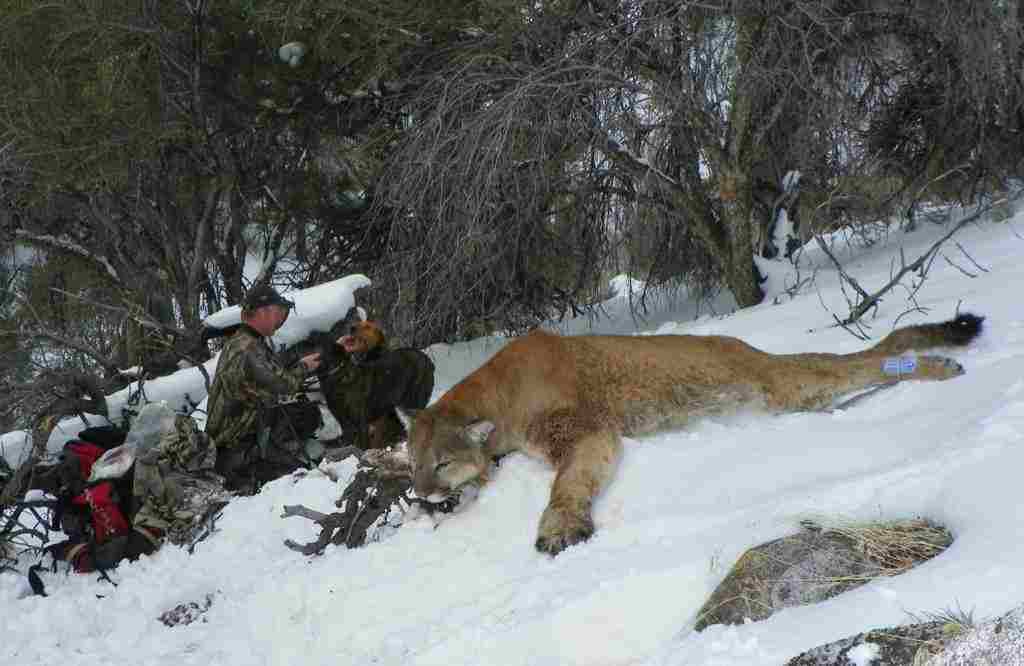
Conclusion
I). SIMILARITIES
After comparing the various aspects of mountain lions and bears, it is evident that these two animals share some similarities. Both species are large predators that play important roles in their respective ecosystems. They are both capable of hunting and taking down prey, although their hunting strategies may differ. Additionally, both mountain lions and bears have adapted to their environments and possess physical characteristics that aid in their survival.
II). DIFFERENCES
Despite their similarities, there are also notable differences between mountain lions and bears. One of the key differences lies in their taxonomy, with mountain lions belonging to the Felidae family and bears belonging to the Ursidae family.
In terms of appearance, mountain lions have a sleek and muscular build, while bears have a more robust and stocky physique. Size-wise, bears are generally larger and heavier than mountain lions. Bears also have a greater bite force, which contributes to their ability to take down larger prey.
